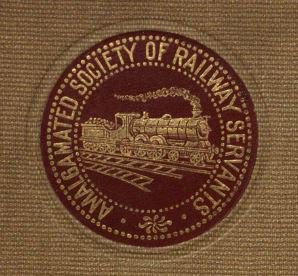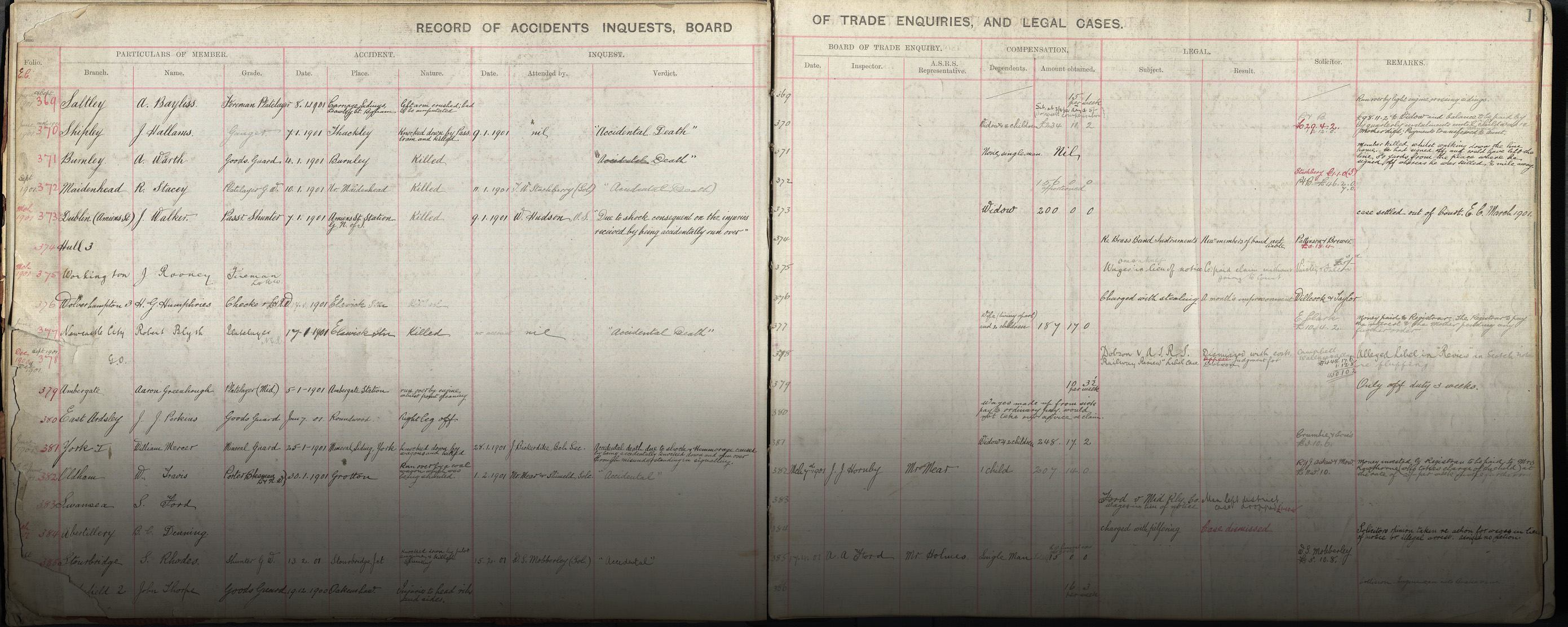Header image courtesy of Modern Records Centre.
Can you help us to find out more about over 2,000 railway workers in just one day?
That’s the challenge we’ve got on Tuesday 5 February this year and we’re hoping you can lend a hand.
Since the ‘Railway Work, Life & Death’ project started in 2016, we’ve kept you updated on our progress as we investigate accidents to British and Irish railway workers in the past. So far we’ve released two sets of data, discussed here and here, covering around 4,500 individuals between 1911 and 1923.
All of this has been thanks to the hard work of National Railway Museum volunteers—but now it’s your chance to get involved! On Tuesday 5 February we’re taking part in ‘Transcription Tuesday’, an event run by Who Do You Think You Are? Magazine, the best-selling family history publication in the UK—and we’d be delighted if you took part.
In Transcription Tuesday, everyone is invited to contribute to projects like ours, by transcribing information from images of original documents into an electronic format. This makes the details in the original much more easily useable by all sorts of researchers—one of the key aims of our project. It’s a great chance to open up what we’re doing and get many more people involved.
To do this, we’re working with a new project partner—the Modern Records Centre at the University of Warwick (MRC). The MRC holds the records of the railway trades unions, like the Amalgamated Society of Railway Servants (ASRS), and it’s an ASRS volume that we’re using.
The volume holds details of the legal cases that the Union was involved in between 1901 and 1905, including representing members who had been involved in accidents. It features details of the workers and their accidents, as well as any compensation secured. Across the 119 pages we estimate that there are around 2,150 cases—though that’s still only a small fraction of the workers involved in workers over the 5 years covered by the volume.

Just one of the cases was that of William Mercer, a mineral guard and a member of the York No. 1 branch of the ASRS. He was killed on 25 January 1901 in a mineral siding in York, knocked down by wagons. The volume shows us that the inquest was held on 28 January 1901, where Mercer’s interests were represented by J Bickerdike, the branch Secretary. At the inquest the volume shows us it was decided that Mercer’s death was accidental, a result of a misunderstanding in signalling. He left a widow and two children, who were awarded a payment of £248.17.2 (around £25,500 at today’s prices) in compensation. We also know from the volume that the ASRS pursued this claim with the assistance of Brumbie and Sons solicitors, at a cost of £3.10.6.
At the moment, though, all of these details are locked up in the volume—accessible if you go to the MRC and search through the whole volume (as no index exists), but not otherwise available. So, we can learn a lot about past railway workers—and their families—if we can transcribe this volume.
There’s more about how to get involved on our website.
We think this is a really exciting opportunity for anyone to join in with what our National Railway Museum and other volunteers have been doing, and to feel the excitement of dealing with the original sources—as well as improving knowledge and understanding of our railway past.
In addition to this initiative, we’re currently starting work with the onsite volunteer team at the MRC, on trades union records which weren’t suitable to include in Transcription Tuesday. We’re continuing our work with an onsite volunteer team at The National Archives in London.
They’re working on accident records that the railway companies produced between the 1890s and 1930, some of which will match up with the existing records in our project database and potentially with the cases revealed in Transcription Tuesday. And our National Railway Museum volunteers are continuing their excellent work on the records produced by the state, this time bringing in reports produced by state inspectors in the interwar period.
It’ll take a while to do all of this—several years—but it’ll be worth the wait. All told, we think this will add another 70,000 or so records to the project—truly incredible!
In the meantime, we really hope you’ll join us on 5 February for Transcription Tuesday—and we look forward to sharing the results with you as soon as possible after the day is over.

Sign me up! It’s the life of the workers who make the railways so interesting.
Do seafarers count in this because there were an awful lot of us
Would that I had know of this earlier. Perhaps I should’ve ! I have somewhere censu records of railwaymen (alright people) living in Hitchin 1851/1861 which I found in the library many years ago and have never done anything about. Unfortunately there is no way I going to find them by tomorrow 5th February. Can I contact somebody about these later please ?
More than happy to help. I worked on the Railways for several years and have a keen interest in anything to do with the railways.
Count me in. Sounds like a useful and interesting project.
hi Would have however; l have only had this now; less than 12 hours notice. So you not be surpised to know l have plans for tomorrow by now. Would like to help, so next time……
count me in
Happy to help if it can be done online. I would love to know if there any details on Samuel Sowden who lost his left leg from a shunting accident when he was a boy playing on the tracks. Probably from 1908 to 1915.
How do I sign up to help
Hello NRM,
I received your note on Monday afternoon. This did not leave me much time to get involved! As it turned out, I was committed elsewhere today and could not have participated. However, I am interested to find out more about the transcription project. Please let me have more details, such as, why only one day/how do we access the original data/who checks the transcription, etc? Chapter and verse, please.
Regards, Ken Haywood
My grandfather and great grandfather were both railwaymen. My grandfather was involved in rescue of passengers following a train accident north of Stafford in the 1930s ( he was a first aided) and was himself run over by a goods train whilst performing his job in mid 1950s and although critically injured eventually returned to work. Railways are in my blood – please count me in !